circulating library
description: for-profit library that lends books to the public for a fee
28 results
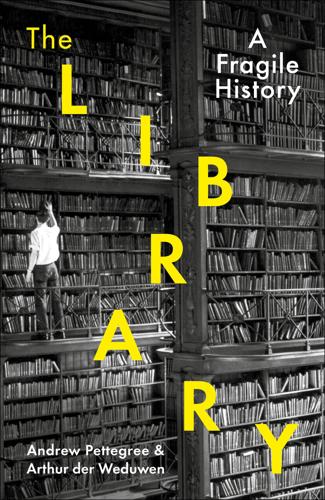
The Library: A Fragile History
by
Arthur Der Weduwen
and
Andrew Pettegree
Published 14 Oct 2021
For all that, from the mid century onwards, they would have a transformative impact on reading habits. The real age of the circulating library began at about the time of Ramsay’s retirement, when a group of established London booksellers each opened a circulating library. Not coincidentally, this was also the beginning of a huge upsurge in the publication of novels: at least 800 new titles between 1750 and 1779.22 A number of the proprietors of the circulating libraries were themselves publishers, most famously the brothers Francis and John Noble, who between 1744 and 1789 published at least 200 novels, most of which found their way into the circulating libraries. Many of the Nobles’ publications made no pretensions to be great literature.
…
When, in 1793, Professor James Beattie visited a bookshop in Dundee and expressed his surprise at finding ‘merely a circulating library of novels’, the booksellers acknowledged that ‘nothing else was read in Dundee’.29 The London proprietors certainly enjoyed a privileged position in the trade, able to manage income and cash flow between their bookselling, publishing and circulating library. They also derived extra profit by acting as wholesalers to the network of circulating libraries that spread rapidly through the English provinces, first to the spa towns and seaside resorts, then to the county towns. We know of at least ten circulating libraries at some point in eighteenth-century Shrewsbury, and twenty-two in York.
…
Within five years circulating libraries had been established in Charleston, New York, Boston and Philadelphia, and shortly thereafter in Baltimore. All were attached to bookshops. This had the great advantage that circulating libraries could be open throughout bookshop hours, a sharp contrast to the early social libraries, which often only permitted borrowing for four hours on a Saturday afternoon. From the beginning it was clear that as in Britain, novels would be the cornerstones of their business. Circulating libraries also encouraged female subscribers. Overall, eleven circulating libraries were established in the seventeen years before the American Revolution, most of relatively short duration.
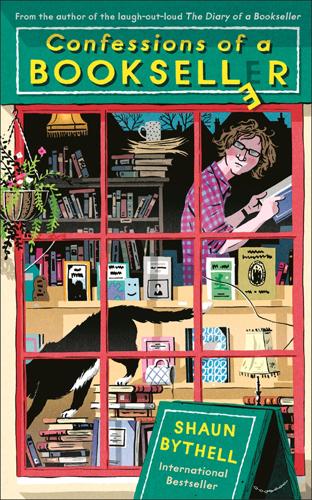
Confessions of a Bookseller
by
Shaun Bythell
Published 8 Aug 2019
This is the age of circulating libraries. Never before have they done such a thumping trade. I cannot agree with those who say in a deep voice that a book is not worth reading if it isn’t worth reading again. I could complete a fat catalogue of the books that are worth reading once only. This is where the public or the private subscription library comes in. Besides, if a man would like to buy a new book, but would prefer to make quite sure of it before he pays good money, he can have a quiet keek through a library copy. I whiles hear folk on the harangue about circulating libraries, and they expect me to agree because I’m a second-hand bookseller.
…
They are usually worthless and go into the recycling, or to the charity shop, but these are the ‘circulating’ or lending libraries to which Baxter refers. Today is no longer ‘the age of circulating libraries’, nor indeed of libraries of any sort. Prior to technological innovations at the end of the nineteenth century that enabled paper, and thus books, to be produced more cheaply, they were an expensive luxury, and only available to the relatively wealthy, and so sprung into existence the circulating library, a service by which – either through subscription or a daily charge – the less wealthy could have access to books. They were commercial enterprises, and enormously popular.
…
Their demise came in three waves: first, the reduced cost of books in the early twentieth century; then the advent of the paperback; and finally, the 1964 Public Libraries and Museums Act, which imposed a duty on local authorities to provide free lending libraries. Boots, the chemist, closed its circulating library in 1966. Scotland’s oldest free lending library is Innerpeffray Library, near Crieff, which has been lending books to the public since 1680. I share John Baxter’s respect for libraries for similar reasons – if someone reads and enjoys a library book, there’s every chance that they’ll want to own a copy of that book, so once it has been returned to the library, it’s likely that they’ll buy a copy.

Who Owns This Sentence?: A History of Copyrights and Wrongs
by
David Bellos
and
Alexandre Montagu
Published 23 Jan 2024
French commercial lending libraries, or cabinets de lecture, had all but disappeared once Belgian piracy had been suppressed in the 1850s, and cheap reprints of literature old and new had become widely available. But in Britain, commercial lending libraries remained the chief vehicle for the distribution of new books throughout the nineteenth century. The biggest of these, Mudie’s Circulating Library, which charged a subscription fee allowing people of relatively modest means to borrow volumes by the day or week, had become the principal purchaser of the “three-decker” novels that it found most profitable to put on its shelves. Copyright may constitute a monopoly, but Mudie’s made publishing a monopsony – a market controlled by a single buyer.
…
The case was appealed to the Supreme Court, which decided in the end that Sony’s Betamax recorders were legitimate devices, since they could be used for non-infringing purposes as well as for “piracy”.186 So, having failed to block sales of the technology, the film industry took a different path. Studios started manufacturing videocassettes themselves, and made them available through commercial lending libraries (very much akin to the Circulating Libraries of nineteenth-century England), and later by subscription to a mail-order lending service. As in many other circumstances described in this book, the wider dissemination of copyright material almost certainly made more money for the content owners than narrower regulation would have done. However, rented videocassettes could themselves be copied by ordinary folk with a double-deck V.C.R. and a stock of blank tapes.
…
Taylor (1769) 93, 94, 96 Milton, John (1606–74) 51, 68, 97 Minitel 267 Misérables, Les (Hugo) 133, 147, 161, 162 and Cérésa 237, 263 and fair use 262 and Jean Valjean’s deathbed speech 280 Mitchell, Margaret (1900–49): Gone with the Wind 238, 252, 261–2 Molière (1622–73) 130 Monaco 152, 164 monarchy 19, 39, 42, 43, 44, 58 monopolies 16, 33, 39–40, 71 and books 40–1 and France 85 and libraries 174 and printing guilds 51 and theatre 130–1 and Venice 34, 35 Monopolies Act (1624) 167 Monroe, Marilyn (1926–62) 227–8 Montenegro 164 moral rights 91, 225–6, 233–9 Morse, Samuel (1791–1872) 204–5 Mosley, Max 230, 232 Mosley, Oswald (1896–1980) 230 Motion Picture Association of America (M.P.A.A.) 183, 266, 273–5, 276–7 Mouchot, Augustin (1825–1912) 149 M.O.V.A. 333–4 Mozart, Wolfgang Amadeus (1756–91) 13, 241 Mudie’s Circulating Library 174 Murano 35 museums 302–3 music 13, 104–5, 235–6, 241–7 and A.I. 20, 334 and Berne Convention 164–5 and public domain 125 and short phrases 279–81 and Spotify 332 and technology 266–7, 270–1 and transformative use 312–13 see also Recording Industry Association of America (R.I.A.A) Myanmar 164 Napoleon I, Emperor (1769–1821) 124 Napoleon III, Emperor (1808–73) 147 nature 81 Netherlands 164, 171, 173, 189, 194 Netscape Communications Corporation 320 “new manufactures” 77–80, 331 New York 149, 151 New York Times 13, 80, 135–6 news 207–11 Newton, Isaac (1642–1726) 81, 88 Nicaragua 192 Nichols, Anne: Abie’s Irish Rose 220 Niépce, Joseph Nicéphore (1765–1833) 169 Norway 152, 164, 189 Notice and Take-Down 269, 270, 271 novels 106–7 open source 320 Oracle 18 Orbison, Roy (1936–88): “Pretty Woman” 312–13 Organization for Transformative Works 263 originality 26, 58–9, 108–9, 139, 154, 330–1 and creative writing 311 and works 58–9, 60, 140–142, 143 orphan works 182–3, 282–4, 340 Ovid (43 BCE–18 CE) 29 ownership 42, 43, 45–6 and books 55–6 and corporations 198–9, 200–11 and facts 202–8 and ideas 58–9 and land 53–5 and printing 48–9, 51–2 Packard, David 80 painting see art Palau 164 Palestine 164 Pamela in High Life (anon) 106–7 Pan-American Convention 194 Panama 192 Pancoucke, Charles (1736–98) 115 Papua New Guinea 164 Paraguay 192 Paris 37, 50, 151 Parker, George (1860–1936) 297, 299 Parliament 101–3, 109 parody 260, 261, 312–13 Pasternak, Boris (1890–1960): Doctor Zhivago 195 Pasteur, Louis (1822–95) 77 patents 17, 18, 19, 32–4, 35–6, 50 and abolition movement 171–3, 175–6 and China 294 and England 167–8 and facts 204–5 and France 168–9 and jurisdictions 166–7 and monopolies 39–40 and “new manufactures” 76–80 and Soviet Union 169–70 and term limits 325 and U.S.A. 170–1 see also privileges Pathé 134 patronage 43–4, 58, 77 Patterson, Lyman 72 penalties 43, 44–5, 83 penicillin 77, 78 Perdue, Lewis 216 Perec, Georges (1936–82) 80, 181 Life A User’s Manual 310 Perfect 10 313–14 performance rights 16 permission fees 299–304, 305–8 Personal (film) 134 personality 221–3 Peru 192 Pfizer 79 pharmaceuticals 79, 340 Phonographic Performance Limited (P.P.L.) 245 photocopying 278 photography 152–3, 155–6, 160, 169, 218, 332 and right of publicity 223–4, 226, 227–8, 229, 230–2 and transformative use 313–17 pianolas 242, 243 Picasso, Pablo (1881–1973) 17, 253 Pichot, Amédée (1795–1877) 161–2 Piedmont-Sardinia, Kingdom 147 Piketty, Thomas 337 Capital in the Twenty-First Century 21–2 piracy 84, 137–8 and Belgium 144–6 and China 291–3, 294, 295 and engravings 100–1, 106 and music 244, 245, 246 and Pamela 106–7 and Scotland 92–8 and Soviet Union 190–2 and technology 265–6, 269 and U.S.A. 138–43, 186–90 plagiarism 25, 26–9, 30–1, 212–19 plaster casts 109 Plato (c.427–c.347 BCE) 23, 24–5, 88 “Playas Gon Play” (song) 279–80 playwrights 25, 129, 130–3, 191 Pliny the Elder (23–79 CE) 26, 29 Plon 237 P.M.A.
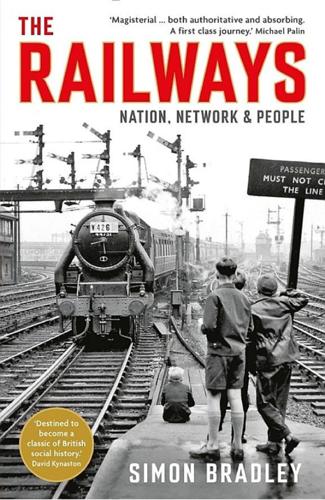
The Railways: Nation, Network and People
by
Simon Bradley
Published 23 Sep 2015
As in Dickens’s writings, railways also figure in the text as quasi-metaphorical invaders of consciousness: another character faints after the sight of a shocking announcement in The Times induces the effect of ‘a great noise as of half-a-dozen furious steam engines tearing and grinding in his ears’. Sensation novels were often regarded with suspicion by higher-minded critics. The Quarterly Review’s Henry Mansel deplored the creation of a reading public of over-stimulated addicts, fed by railway bookstalls and circulating libraries. An essay of 1880 by Matthew Arnold swiped at ‘cheap literature, hideous and ignoble of aspect, like the tawdry novels which flare in the book-shelves of our railway stations’. Ungrateful beneficiaries of these formats included the novelist Ouida, who in 1885 lamented the advance of ‘hideous coloured-paper covers, and flaunting colours’ at railway bookstalls.
…
In practice, Smiths would supply a copy of Esther Waters to any customer who ordered one, but the company refused to display such a controversial title for general sale, or to add it to the stocklist of the company’s lending libraries. For it was not necessary to buy a book from Smiths in order to read it: the nineteenth century was the great age of the private circulating library, and Smiths had joined the boom in 1860. Its model was the famous business set up by Charles Edward Mudie, which had operated from New Oxford Street in London since 1852. Mudie’s standard subscription was a guinea per annum, allowing the loan of one volume at a time. This steep fee restricted membership to the genteel classes: Mudie’s list reached a ceiling of 25,000, with branches in provincial cities and elsewhere in London.
…
His lonely, boring hours on duty were diversified by making sketches of his colleagues and composing verses of a Byronic rather than Betjemanian kind: The desk that held my Ledger book Beneath the thundering rattle shook Of Engines passing by; The bustle of the approaching train Was all I hoped to rouse the brain Or startle apathy. As soon as the day’s last train had gone, Branwell headed uphill to the inn, where there was a circulating library and the prospect of lively conversation. Then he began slipping away before the last train, leaving the porter to issue tickets and keep the books without supervision. When the annual audit came, the accounts at Luddendenfoot were short by £11 1s 7d, and Branwell’s ledgers were found to have been scribbled all over with his drawings and caricatures.
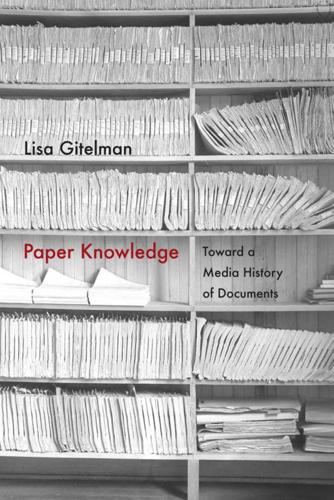
Paper Knowledge: Toward a Media History of Documents
by
Lisa Gitelman
Published 26 Mar 2014
Widener Library and the other Harvard libraries added machines, too, making some immediate changes in the way that engineering literature—for one—circulated, since article copies, instead of bound journals or unbound issues, became the new unit of transaction. Demand XEROGRAPHERS OF THE MIND 91 was high everywhere: when Baker Library installed its Xerox 914 in 1964, it made 25,000 copies in the first three months, “twice as many as had been expected.”26 America’s great circulating libraries had long promoted the secular “devotions of self-realization that embody freedom in liberal democracy,”27 in the form of selecting, borrowing, and reading books, and now those devotions were being joined by the practice of xerographically excerpting books. Anyone can “make his own book,” Marshall McLuhan pronounced, and make it out of other books.28 Copying—as few scholars have admitted publicly—would become a surrogate for reading, displacing knowledge: you can read something and have it in mind, or you can Xerox something and have it at hand.29 Ultimately Ellsberg had copies or partial copies of the history squirreled away with different friends.
…
Thomas Augst, “Faith in Reading: Public Libraries, Liberalism, and the Civil Religion,” in Institutions of Reading: The Social Life of Libraries in the United States, ed. Thomas Augst and Kenneth Carpenter (Amherst: University of MasN OT E S TO C H A P T E R T H R E E 173 28. 29. 30. 31. 32. 33. 34. 35. 36. 37. 38. 39. 40. 41. 42. 174 sachusetts Press, 2007), 154. Notably Augst is writing about public circulating libraries like the Boston Public Library, not private libraries like Harvard’s. Quoted in Wirtén, No Trespassing, 66. See Schwartz, The Culture of the Copy, 235. See also Geoffrey C. Bowker, Memory Practices in the Sciences (Cambridge, MA: mit Press, 2005), 15. Brooks, “Profiles,” 58, emphasis in the original.
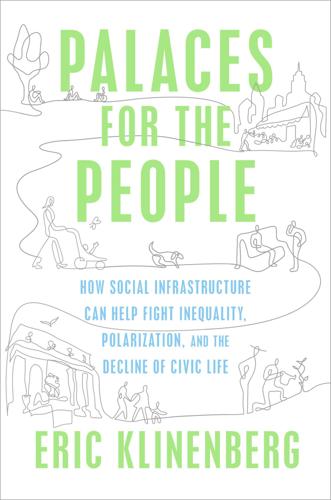
Palaces for the People: How Social Infrastructure Can Help Fight Inequality, Polarization, and the Decline of Civic Life
by
Eric Klinenberg
Published 10 Sep 2018
In 2008, Stephen Schwarzman, the Wall Street financier and CEO of the Blackstone Group, gave $100 million to the New York Public Library, which in turn named its landmark building on Fifth Avenue after him. And in 2017, the Stavros Niarchos Foundation gave $55 million to renovate Manhattan’s major circulating library, just across from the Schwarzman building. These are extraordinary contributions, but they’re just a drop in the bucket compared with what cities around the world need in order to rebuild the woefully outdated branch libraries that, despite their old age, still uphold neighborhoods and communities, helping those who aspire to a better life or just need companionship to get through the day.
…
establish Internet connections: See the press release here: https://www.gatesfoundation.org/Media-Center/Press-Releases/1997/06/Bill-and-Melinda-Gates-Establish-Library-Foundation. just need companionship to get through the day: Until 2017, when the Stavros Niarchos Foundation gave $55 million to rebuild the circulating library in Midtown, the last major effort to invest in the New York City Public Library was a misguided, massively expensive, and ultimately ill-fated effort to renovate the flagship library, led by elite trustees who, as one former library executive said, “only care about the 42nd Street building” and “don’t care about the branches.”
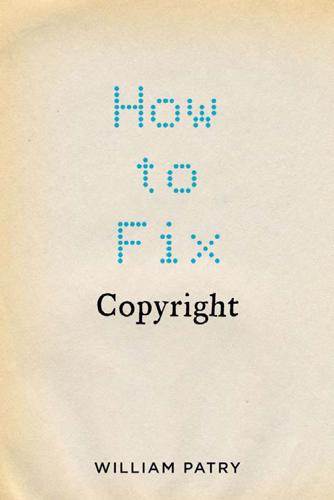
How to Fix Copyright
by
William Patry
Published 3 Jan 2012
(One year before, Scottish judges reached the same conclusion in a dispute over the same work and the same defendant, with Lord Kames writing: “I have no difficulty to maintain that a perpetual monopoly of books would prove more destructive to learning, and even to authors, than a second irruption of Goths and Vandals.”)25 As a result of the rejection of booksellers’ claims, “a huge, previously suppressed, demand for reading was met by a huge surge in the supply of books, and was soon caught up in a virtuous circle of growth.”26 The new, powerful demand not only lowered dramatically the cost of classic texts—reestablishing the link between manufacturing costs and profit margins—but it also led to the invention and spread of new technological ways of printing, paper production, and binding, resulting in considerable economic and 86 HOW TO FIX COPYRIGHT cultural changes.27 There was a sharp increase in output in the quarter century following the House of Lords’ decision, including children’s books.28 Even with the understanding that, as in any industry, consumption patterns are multi-faceted, data compiled by the English Short Title Catalogue29 make a compelling case that passage of the 1710 Statute of Anne led to a decrease in the number of works available.That decline began to turn around only at the end of the 1740s, due to the advent of the first generation of commercial circulating libraries, and the wider use of new, innovative forms of printing. The most dramatic increase in publishing came in the two decades following the House of Lords’ decision in Donaldson v. Beckett. Rejection of perpetual copyright led to an almost 54 percent increase in first editions alone, as seen below: Number of First Editions since 1700 Year 1700 1710 1720 1730 1740 1750 1760 1770 1780 1790 Number of First Editions 3,407 3,649 3,016 2,816 2,962 4,454 4,677 5,052 6,152 9,19630 Source: Adapted from James Raven, The Business of Books: Bookseller and the English Book Trade.
…
Digital Video Recorders were introduced in 1999 at the Consumer Electronics Show.They have a long and complicated history, involving copy protection schemes, a successful effort by the movie studios to get the Federal Communications Commission to amend its regulations to give the studios control over copying (the broadcast flag), as well as lawsuits. 75. See Hal Varian and Richard Roehl’s prescient article, “Circulating Libraries and Video Rental Stores,” December 1996, revised March 9, 2000, available at: http://citeseerx.ist.psu.edu/viewdoc/summary? doi=10.1.1.46.6846. 76. See Address of Dr. Francis Gurry, Director General of the World Intellectual Property Organization, November 26, 2010, Beijing, China. 77. See Chapter 6.
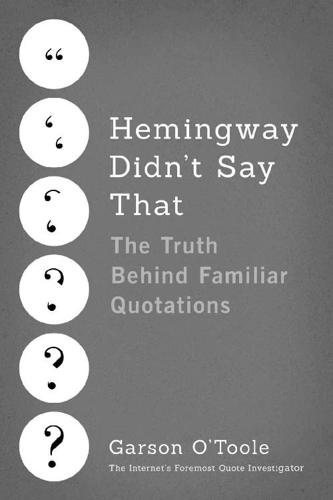
Hemingway Didn't Say That: The Truth Behind Familiar Quotations
by
Garson O'Toole
Published 1 Apr 2017
In the following excerpt, Byron lamented that he had not acquired “the art of easy writing”:3 Oh that I had the art of easy writing What should be easy reading! Hood’s statement was further disseminated in 1837 when his letter to the Athenaeum discussed above was excerpted in a weekly compilation called Waldie’s Select Circulating Library based in Philadelphia, Pennsylvania.4 In 1845 Douglas Jerrold’s Shilling Magazine printed a book review that included an instance of the saying without attribution.5 It is a work that the most cultivated may read with advantage, who will be delighted with its skill and taste; and if easy reading is hard writing, we are exceedingly obliged to the author, for anything easier and more skilfully graceful on such knotty subjects it has seldom, if ever, been our lot to peruse.
…
Griffin, at Garrick’s Head, in Catharine-Street, 1772), 16. Accessed in ECCO Eighteenth Century Collections Online. 3. Lord Byron, Beppo: A Venetian Story (London: John Murray, 1818), 25. Accessed in Google Books, https://goo.gl/sbjWu3. 4. The Journal of Belles Lettres, [Waldie’s] Select Circulating Library, Containing the Best Popular Literature 25 (June 20, 1837), 3. Accessed in Google Books, https://goo.gl/6wgKf6. 5. Review of Lectures, Addressed Chiefly to the Working Classes by W. J. Fox, Douglas Jerrold’s Shilling Magazine 2, no. 8 (1845): 192. Accessed in Google Books, https://goo.gl/F5EipW. 6.
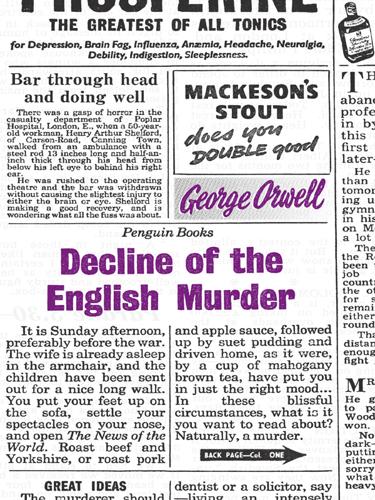
Decline of the English Murder
by
George Orwell
Published 24 Jul 2009
The sight of a French book produced the usual remarks – ‘Ah, French? That’ll be something pretty warm, eh?’ etc. Evidently most English people have no idea that there are French books which are not pornographic. Down and out people seem to read exclusively books of the Buffalo Bill type. Every tramp carries one of these, and they have a kind of circulating library, all swapping books when they get to the spike. That night, as we were starting for Kent the next morning, I decided to sleep in bed and went to a lodging house in the Southwark Bridge Road. This is a sevenpenny kip, one of the few in London, and looks it. The beds are five feet long, with no pillows (you use your coat rolled up), and infested by fleas, besides a few bugs.
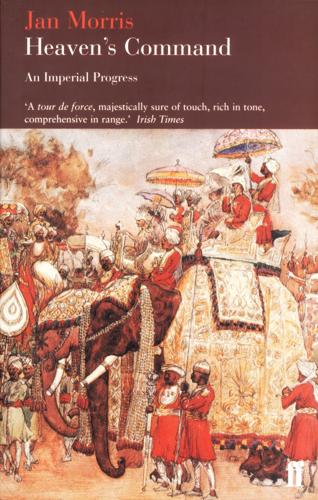
Heaven's Command (Pax Britannica)
by
Jan Morris
Published 22 Dec 2010
Such residents, however, loved to greet the right sort of visitor from England, and to demonstrate that even in Australia, my dear, some of us know what breeding means. There were Sydneysiders already noticeably peevish at any suggestions of provinciality, who would have you know that the very latest novels were to be found at the circulating library, and that in their experience Rickard’s Fashionable Repository was quite the equal of anything in Bond Street. Many more, though, assiduously aped all things English, fluttered ingratiatingly about the Governor’s family or the officers of the garrison, and would never dream of wearing a dress from Rickard’s so-called Fashionable Repository, preferring to import all their clothes direct from London.
…
Whose constant study it was to elevate the moral and intellectual character of the nation And undoubtedly it was Walter Savage Landor, in the most famous imperial epitaph of all, who came nearest to capturing the frail sense of disillusion that haunted the British Empire even in its prime. Rose Aylmer was an almost legendary young Anglo-Welsh beauty with whom Landor had fallen in love at sight one day in the Swansea Circulating Library. She had been staying with an aunt in India‚ had died of dysentery, and had been buried in the Park Street Cemetery in Calcutta, itself an imperial city of the dead, laid out in avenues of domes, obelisks and classical temples like an architectural display. Upon her tomb was inscribed the elegy which almost alone, among all the hundreds of thousands of imperial epitaphs, catches the heartbreaking loss of life and love which was so often the price of dominion: Ah, what avails the sceptred race!
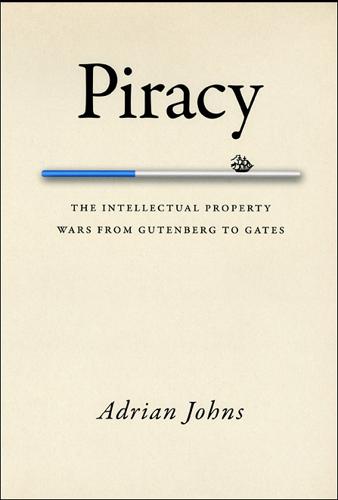
Piracy : The Intellectual Property Wars from Gutenberg to Gates
by
Adrian Johns
Published 5 Jan 2010
A major point of reprints at the outset was therefore that they were much cheaper for local, Irish readers than their London originals. In 1767 the Irish parliament heard that there was even a standardized retail price, twopence per sheet, and those for whom this was too high might find books at one of the proliferating circulating libraries. Individual buyers remained urban rather than rural, Protestant rather than Catholic. This was the domestic readership that the reprint industry addressed and in turn spurred. Reprinting took its identity from the politics of the Irish capital. These were politics of fragile prosperity, religious tension, and growing nationalism.
…
After all, as he and several other critics pointed out, libraries like the Bodleian were not public institutions in any but the most legalistic sense: they remained closed to “the publick at large,” and in many cases even to students at the universities themselves. But at the same time he warned that one aspect of the case was an implicit threat that the libraries might become public, developing into circulating libraries and therefore removing from the market not just nine or ten readers at a time, but ninety or a hundred. This would simply destroy the market for scholarly works. Creating the Enlightenment’s universal libraries would in practice kill off the very books that such libraries existed to collect.
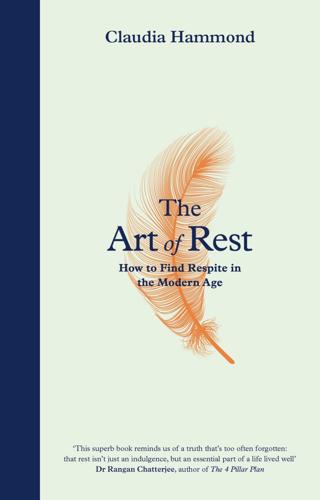
The Art of Rest: How to Find Respite in the Modern Age
by
Claudia Hammond
Published 5 Dec 2019
In eighteenth-century England, sitting down with a novel was considered ‘as to drink wine’. It was a wicked vice. As well as promoting indolence and laxity, the reading of novels was thought to damage your posture and present a fire risk because, of course, at that time you needed candles in order to read on dark evenings. Mobile libraries, known as circulating libraries, were compared with brothels and gin shops. ‘Reading sofas’ – which sound mild enough to us – were excoriated by moralisers and social reformers. Writing in 2008, the academic Ana Vogrincˇicˇ compares eighteenth-century attitudes to the novel with the moral panic around watching TV today.

The End of Ownership: Personal Property in the Digital Economy
by
Aaron Perzanowski
and
Jason Schultz
Published 4 Nov 2016
See, e.g., Mark King, “Amazon Wipes Customer’s Kindle and Deletes Account with No Explanation,” Guardian (UK), October 22, 2012, http://www.theguardian.com/money/2012/oct/22/amazon-wipes-customers-kindle-deletes-account, accessed August 6, 2015. 21. Josh Hadro, “HarperCollins Puts 26 Loan Cap on Ebook Circulations,” Library Journal, February 25, 2011, http://lj.libraryjournal.com/2011/02/technology/ebooks/harpercollins-puts-26-loan-cap-on-ebook-circulations/, accessed August 6, 2015. In response, one library then posted video of one of its analog HC copies after twenty-six lends to show that it was in near-perfect condition.

The Pineapple: King of Fruits
by
Francesca Beauman
Published 22 Feb 2011
The pineapple had penetrated the public imagination to such an extent that the allusion would have been extremely familiar to contemporary theatre audiences.35 The pleasures of the pineapple could, however, be fatal. Rose Aylmer was the first love of the popular poet Walter Savage Landor. They fell for each other in the romantic setting of the Swansea Circulating Library; but almost before the relationship had a chance to splutter into life, Rose was sent away to India to join her uncle Sir Henry Russell, a judge at the High Court in Calcutta, leaving Landor in Wales with a broken heart.36 She never returned. According to the well-known gossip William Hickey, then a member of the Indian Civil Service, on 2 March 1800 at the age of just twenty, Rose ‘was attacked by a most severe bowel complaint brought on entirely by indulging too much with that mischievous and dangerous fruit, the pine-apple’, despite the fact that he had in the past cautioned her against it, he claimed.37 She died just a few days later and was buried in Calcutta in a tomb shaped like a pineapple (it is still possible to visit it).

The Dictionary People: The Unsung Heroes Who Created the Oxford English Dictionary
by
Sarah Ogilvie
Published 17 Oct 2023
There he was, living on the other side of the world, working in tough conditions, and yet he couldn’t wait to get hold of the finished product. ‘We look forward to the six vols of 4 parts to each vol of 250 pages with pleasure. Send them along, and every one of us that have these volumes on our bookshelves need not trouble about a library, or joining a circulating library, they will have a library always with them that will take them all their lives to get through, and they can bequeath their research to their children’s children as an heirloom.’ He ends his letter to Murray with a funny story: ‘A Wisconsin farmer returned a dictionary to his neighbour from whom he had borrowed it, with the remark that the thing was pretty good, but “the blarsted book hasn’t got an index”.’
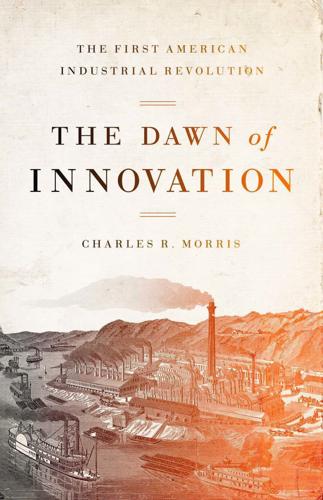
The Dawn of Innovation: The First American Industrial Revolution
by
Charles R. Morris
Published 1 Jan 2012
I would have removed from those works if I had had the power. I am now going to state three facts, which will startle a large class of readers [in England] very much. Firstly, there is a joint-stock piano in a great many of the boarding-houses. Secondly, nearly all these young ladies subscribe to circulating libraries. Thirdly, they have got up among themselves a periodical called THE LOWELL OFFERING . . . [of which] I will only observe ... that it will compare advantageously with a great many English Annuals.20 Dickens’s favorable impression would have been reinforced by the design of the mill village.
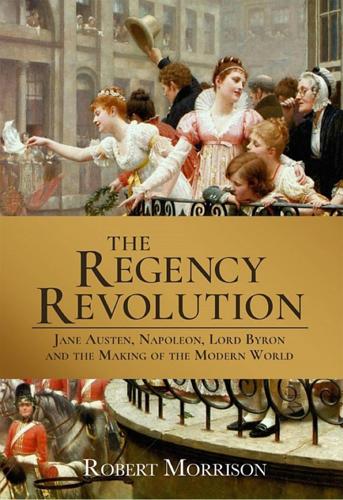
The Regency Revolution: Jane Austen, Napoleon, Lord Byron and the Making of the Modern World
by
Robert Morrison
Published 3 Jul 2019
Eighteenth-century novelists like Samuel Richardson, best known for Pamela (1740) and Clarissa (1747–48), and Oliver Goldsmith, celebrated for The Vicar of Wakefield (1766), were significant exceptions to the rule, but by the beginning of the nineteenth century fiction was widely regarded as a shamelessly commercial assault on time-honored classical culture, and a particularly bad influence on the young, in whom it fostered immoral and rebellious desires. Worse still, women were the main consumers of novels, and they had easy access to them, for while priced high enough to be considered luxury items, novels could be borrowed at very reasonable rates from lending or “circulating” libraries, which had sprung up all over the country from the mid-eighteenth century onward and which catered to a female clientele by stocking items such as stationery, perfume, and jewelry in addition to a plentiful supply of popular books.57 The Minerva Press was the leading publisher of what we would now call “trashy” fiction, and it specialized in the bulk sale of cheap volumes that offered various combinations of the sentimental, the sensational, and the gothic, all wrapped around a highly predictable plotline in which young lovers of unequal rank must overcome several social and economic obstacles, and in which the woman in particular is driven through a series of picturesque landscapes and harrowing adventures before being reunited with her suitor and achieving the happy ending that has for so long been in jeopardy.
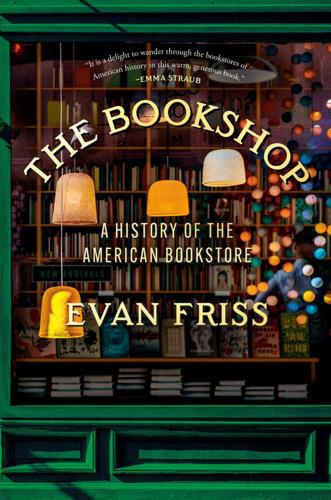
The Bookshop: A History of the American Bookstore
by
Evan Friss
Published 5 Aug 2024
By the mid-1930s, the Rand School Book Store, which had once helped fund the school, had only about $8,000 in yearly sales, compared with the more than $50,000 of two decades prior. The small expenses—telephone, towels, stationery, window cleaning—added up. The store was bleeding money. Two blocks south, the Workers’ Bookshop increasingly became a destination. It hosted reading groups, exhibitions on the history of Marxism, and a circulating library where party members borrowed books for fifteen cents a week. Pro-Communist gear was on sale, too. Show your support for the cause, shop staff urged, with an anti-Hearst button or a progressive greeting card. The shop offered periodic sales to workers (available at any Workers’ Bookshop nationwide), distributed leaflets, issued a regular newsletter, and sold tickets to balls, dances, and talks by Emma Goldman.

City: A Guidebook for the Urban Age
by
P. D. Smith
Published 19 Jun 2012
In 1731 he had organised what he termed ‘the Mother of all American Subscription Libraries’, the Library Company of Philadelphia, an idealistic institution in which the money of stockholders was used to buy books that all could borrow.18 It is America’s oldest cultural institution and this independent research library is still free and open to the public. Circulating libraries had begun in the eighteenth century, charging a small fee for the right to borrow books. By 1818, London had thirteen such libraries stocked with new titles from the six to eight hundred books published in the capital each year. Paris had twenty-three reading rooms by around this time, rising to 118 in 1893.

Dr. Johnson's London: Coffee-Houses and Climbing Boys, Medicine, Toothpaste and Gin, Poverty and Press-Gangs, Freakshows and Female Education
by
Liza Picard
Published 1 Jan 2000
The Eider-down Warehouse sold ‘bags made with it to keep the feet and legs warm in travelling … likewise Night gowns quilted’, from 6 guineas.26 There was a ‘Chinese paper warehouse’ in Newgate Street, and at least two others where the apprentice unrolled with a flourish a roll of sumptuously flowered wallpaper. If the happy couple agreed on it, the shopkeeper could see to its being ‘matched and compleatly put up’. In Francis Noble’s ‘Large Circulating Library’ near Covent Garden, ‘Books are lent to read (both English and French) at half a guinea a year or three shillings a quarter. Note, new books bought as soon as published. Ready money for any library or parcel of books, and books exchanged.’ The Tombs and Lions The tombs in Westminster Abbey were something every visitor had to see.
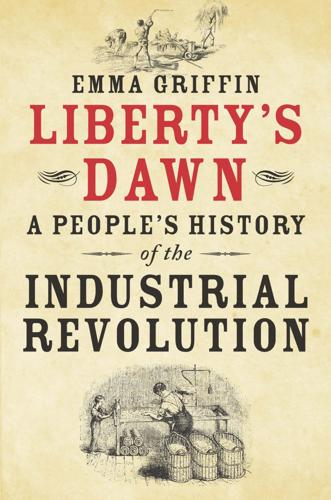
Liberty's Dawn: A People's History of the Industrial Revolution
by
Emma Griffin
Published 10 Jun 2013
Christopher Thomson owed much of his education to the charity of a wealthy local Methodist, Mr Thompson. Under such guidance, it was no surprise that Christopher soon became an ‘accredited Methodist’ and ‘zealous young sectarian’.106 But his schooling also instilled a love of reading and to encourage this, his father paid his subscription to one of Hull’s private circulating libraries. Thomson was so engrossed in his first book from the library – Splendid Miseries – that he was very late for church and called to account for his absence in front of the bench of class leaders. The senior warned him that if he ‘did not at once, and unconditionally, renounce all books, except such as they approve of, I was forever lost!’
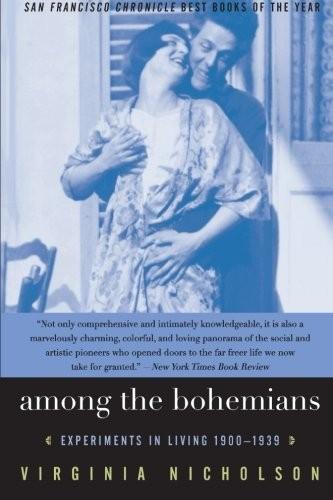
Among the Bohemians: Experiments in Living 1900-1939
by
Virginia Nicholson
Published 27 Nov 2003
A good round-up of Soho bistros appears in Robert Machray’s The Night Side of London. Nina Hamnett and the butter-throwing episode appears in Laughing Torso (see Chapter 1). For Kathleen Hale and Gaudier-Brzeska see Chapter 4. George Moore’s A Modern Lover was a book in advance of its time, banned by the circulating libraries as indecent; today this outspoken novelist is almost forgotten. Richard Garnett drew my attention to Christahel Who? by Jane Spottiswoode. He pointed out, rightly, that Christabel exemplified an unromantic aspect of Bohemia that deserved investigating. 7. New Brooms Mrs Beeton – see above, Chapter 6 – was essential here.

WTF?: What's the Future and Why It's Up to Us
by
Tim O'Reilly
Published 9 Oct 2017
During the industrial revolution, the new generation of workers was surprisingly well educated. Bessen notes that when Charles Dickens visited the mills in Lowell in 1842, he “reported several ‘surprising facts’ back to his English readers: the factory girls played pianos, they nearly all used circulating libraries, and they published quality periodicals.” People typically entering the new workforce were less productive at first, and there was no pool of experienced workers to draw from. Turnover was high as people tried out the new style of work, and not all of them succeeded. The machine mills and looms didn’t become truly productive for decades after their introduction.
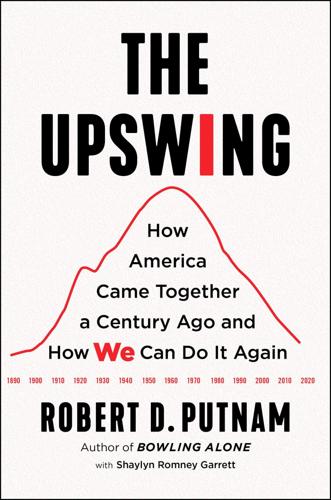
The Upswing: How America Came Together a Century Ago and How We Can Do It Again
by
Robert D. Putnam
Published 12 Oct 2020
With his 1891 encyclical Rerum Novarum, Pope Leo XIII “rejected laissez-faire theories of economic liberalism, and laid the central planks of modern Catholic social teaching, based on the rights to a just wage and to form unions, the call for a more equitable distribution of wealth and the duty of the state to ensure social justice in the economy.”57 As always, the church played a predominant role in the black community. Evelyn Higginbotham, a leading historian of the African American church, observes that “it housed a diversity of programs including schools, circulating libraries, concerts, restaurants, insurance companies, vocational training, athletic clubs—all catering to a population much broader than the membership of individual churches. The church… held political rallies, clubwomen’s conferences, and school graduations.”58 In short, a socially reformist Christianity was a central inspiration for much of the social activism of the period.
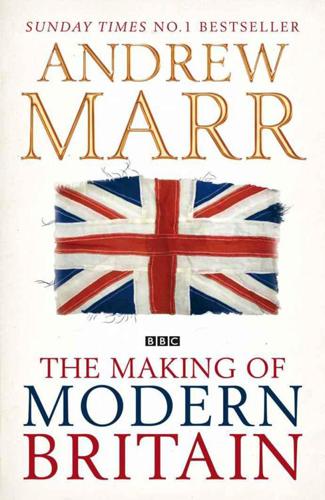
The Making of Modern Britain
by
Andrew Marr
Published 16 May 2007
Pinker to collect some essays about the future that he had published in British and American newspapers. In 1901, alongside Rowntree on poverty, Wells’s resulting Anticipations was one of the talking-point books of the year. It ran to eight reprints in the first twelve months and was one of the bestsellers for the powerful circulating libraries and booksellers Mudie’s and Smith’s. Beatrice and Sidney Webb both thought it their favourite book of the year and were so impressed that they went to visit Wells at his Kent home to help draw him into their circle. He was introduced to A. J. Balfour, about to become prime minister, and fêted by the director of the Natural History Museum.
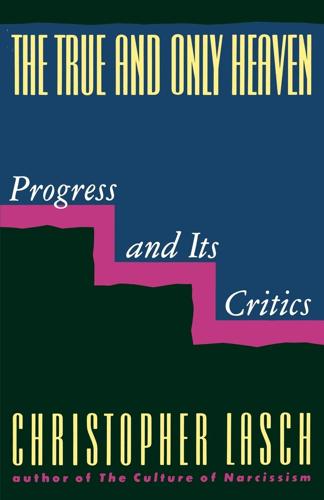
The True and Only Heaven: Progress and Its Critics
by
Christopher Lasch
Published 16 Sep 1991
If -345- culture was a function of affluence and leisure, then universal abundance, together with an ambitious program of popular education designed to instill appreciation of the classics, held out the best hope of cultural democracy. Once the masses enjoyed leisure, affluence, and education, they would become discriminating consumers of art, letters, and ideas. Museums, concert halls, circulating libraries, and the new technologies of cultural reproduction—phonograph records, cheap editions of books, photographic copies of famous paintings—would give ordinary people access to the "best that had been thought and done in the world." Matthew Arnold's familiar phrase summed up this particular conception of culture, which many progressives (unlike Arnold, who thought the "best" could be appreciated only by the few) now proposed to universalize in the expectation that this would not require any appreciable alteration of its content.

Arabs: A 3,000 Year History of Peoples, Tribes and Empires
by
Tim Mackintosh-Smith
Published 2 Mar 2019
Neither is convincing, and no one can be convincing as long as we cannot answer crucial questions about the dating and authenticity of Umayyah’s poems. Regarding the latter, it is generally agreed, ‘that there might well be some authentic material’ among the verses ascribed to him. That is all. And all that can be said with certainty is that, in western Arabia in late pagan times, there was a kind of oral circulating library – of parables from ancient times, snippets of knowledge about the Jewish and Christian scriptures, and ideas about creation and the nature of the monotheistic God. All the hanifs drew from these, and to try to decide which way influences went between them is probably a pointless exercise. What is clear is that Muhammad was not alone in his beliefs.

The Better Angels of Our Nature: Why Violence Has Declined
by
Steven Pinker
Published 24 Sep 2012
Figure 4–9 shows that the number of books published per year rose significantly in the 17th century and shot up toward the end of the 18th. The books, moreover, were not just playthings for aristocrats and intellectuals. As the literary scholar Suzanne Keen notes, “By the late 18th century, circulating libraries had become widespread in London and provincial towns, and most of what they offered for rent was novels.”131 With more numerous and cheaper books available, people had a greater incentive to read. It’s not easy to estimate the level of literacy in periods before the advent of universal schooling and standardized testing, but historians have used clever proxy measures such as the proportion of people who could sign their marriage registers or court declarations.